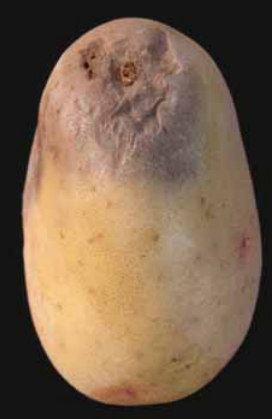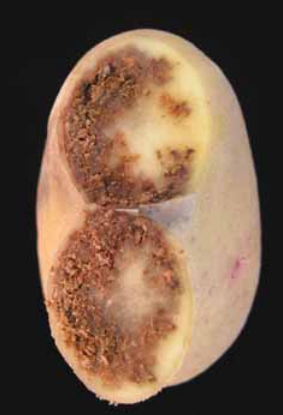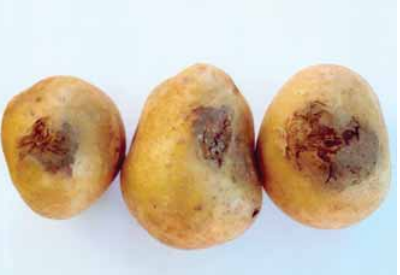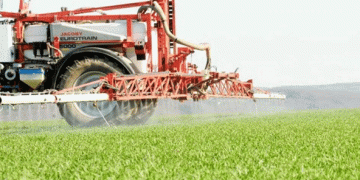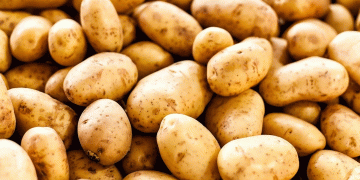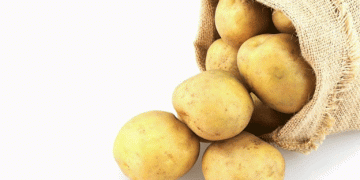Pathogens. Several species of Fusarium cause this disease. These fungi are seed- and soil-borne.
Disease development. Fusarium wilt usually occurs from mid- to late-season and is most common when hot, dry growing conditions place potato plants under stress.
Infection is favoured by soil temperature above 20°C. The fungi penetrate roots through wounds and plug the vascular tissue.
Symptoms. Wilting of plants is the most noticeable symptom. Lower leaves turn yellow and eventually dry up and hang on the plant. The disease progresses upward, stems fail to elongate and the plants die prematurely.
The wilting caused by Fusarium may be confused with Verticillium wilt. A laboratory test is usually needed to identify the pathogen causing the wilt.
Tuber symptoms may vary with the Fusarium species and the potato cultivar. In severe infections, tubers become sunken at the stem end with a brown, dry rot extending into the tuber. The lesions dry up if tubers are kept under low humidity.
Yukon Gold seems to be very susceptible to Fusarium stem end rot.
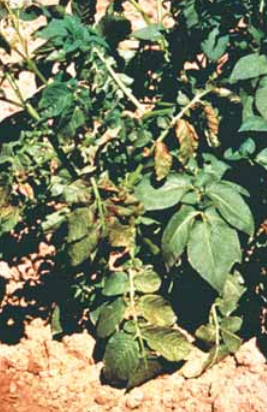
the stems and the plants wilt during the day but revive at
night. Interveinal areas of leaflets turn yellow and brown.
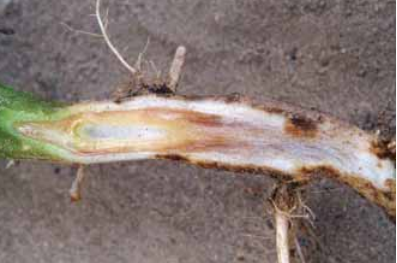
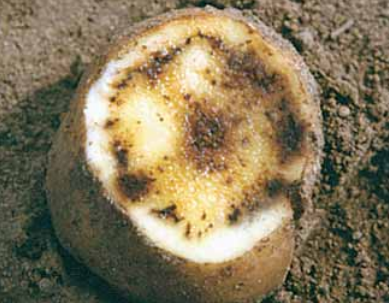
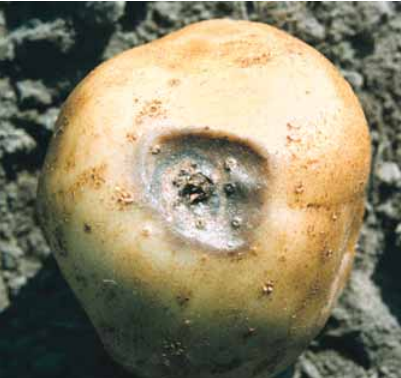

tuber
